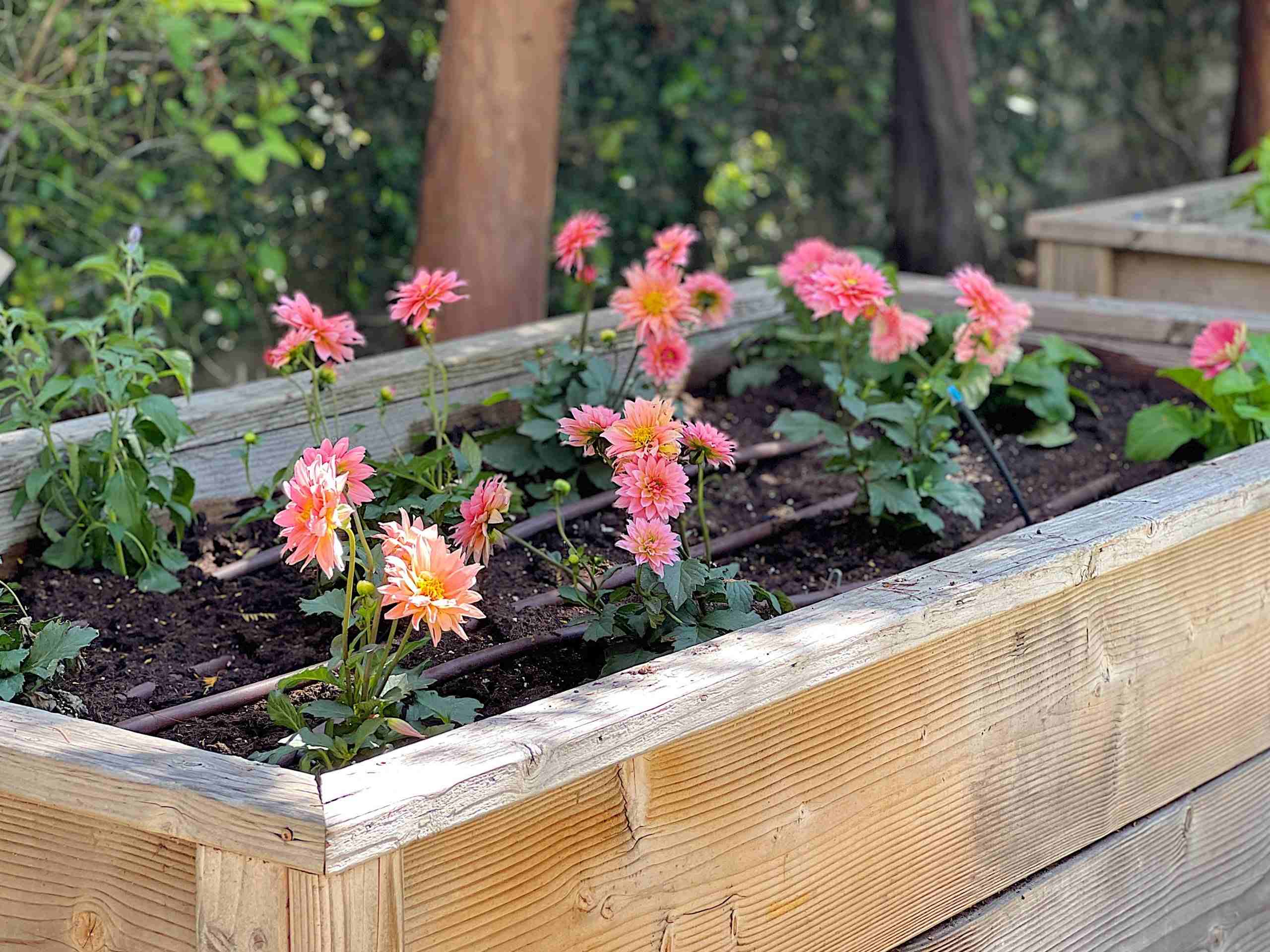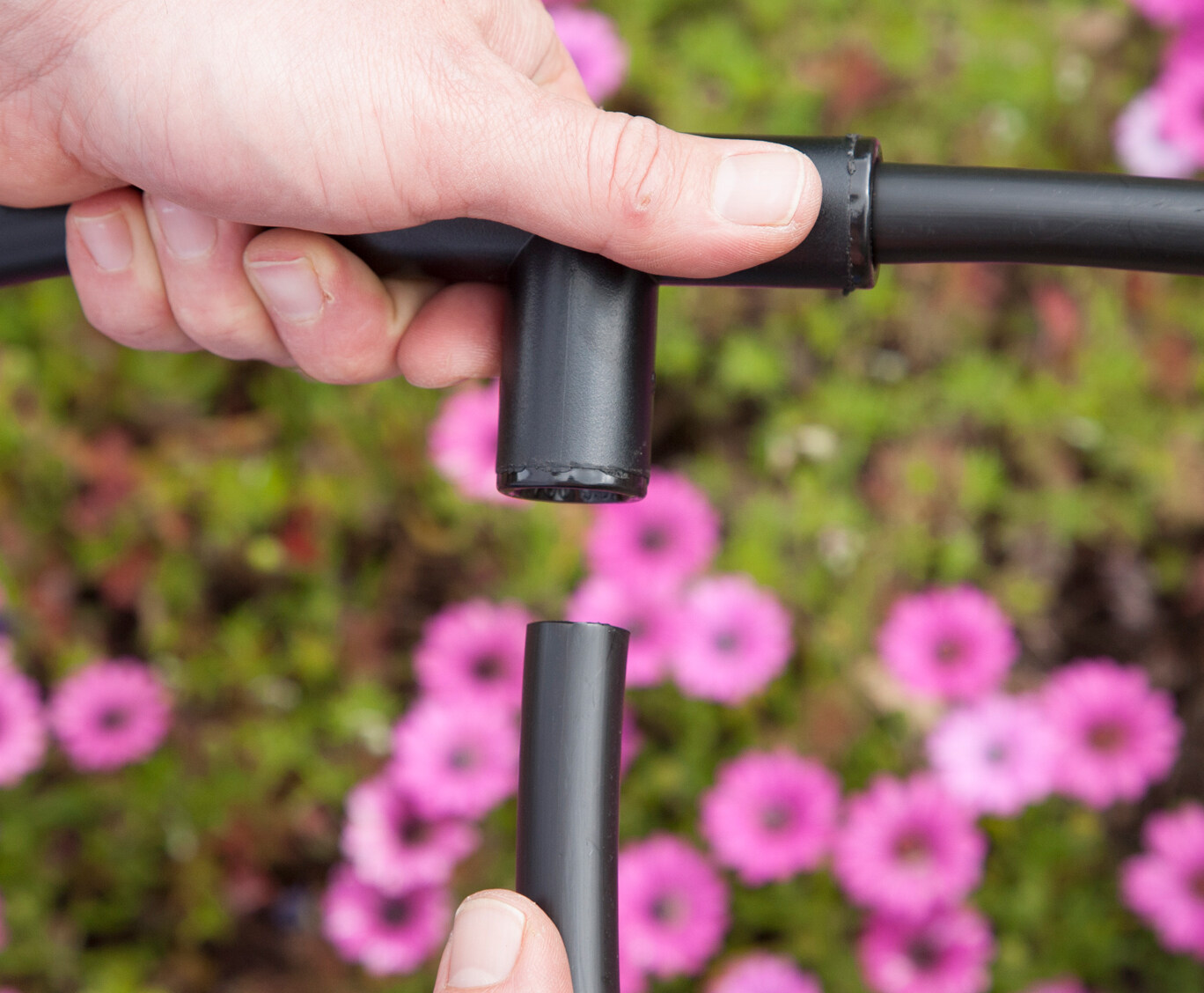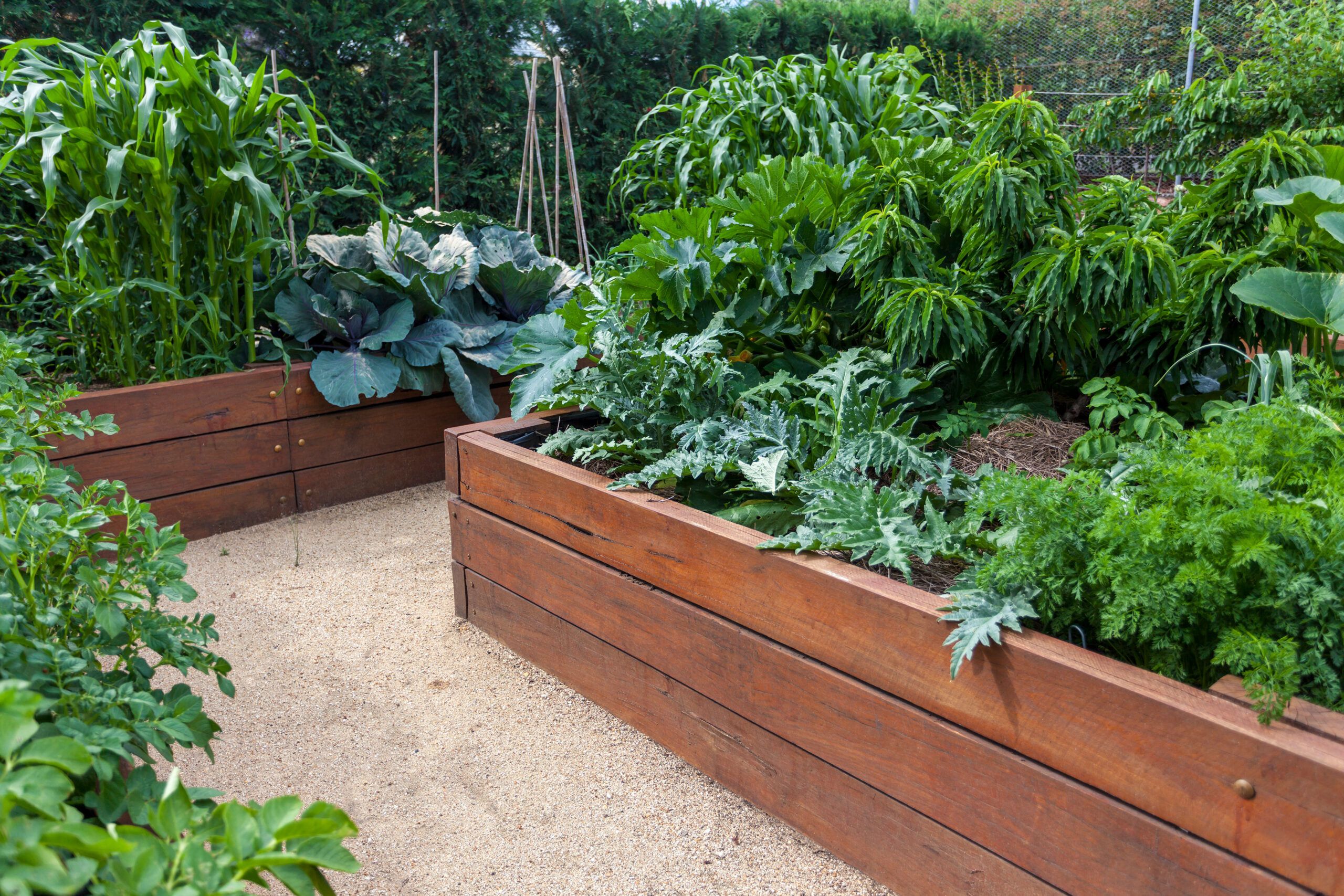Home>Gardening Basics>Understanding Soil>How Much Soil For Raised Bed


Understanding Soil
How Much Soil For Raised Bed
Modified: February 7, 2024
Learn how much soil to use for your raised bed garden. Understand the importance of soil composition and depth for optimal plant growth.
(Many of the links in this article redirect to a specific reviewed product. Your purchase of these products through affiliate links helps to generate commission for Chicagolandgardening.com, at no extra cost. Learn more)
Table of Contents
Introduction
Understanding the Importance of Soil Quantity in Raised Bed Gardening
Welcome to the world of raised bed gardening! Whether you”re a seasoned gardener or just starting out, the concept of raised bed gardening offers a myriad of benefits and the opportunity to cultivate a thriving garden in a controlled environment. One of the fundamental considerations when embarking on this horticultural adventure is determining the appropriate amount of soil needed to fill your raised bed. This crucial aspect can significantly impact the success of your gardening endeavors, making it essential to comprehend the intricacies of soil quantity in the context of raised bed gardening.
As you delve into the world of raised bed gardening, you”ll discover that the volume and quality of soil used in your raised bed play a pivotal role in nurturing healthy plant growth and optimizing the overall gardening experience. Whether you”re growing vibrant flowers, luscious vegetables, or aromatic herbs, the soil serves as the lifeblood of your garden, providing essential nutrients, moisture retention, and a conducive environment for root development.
Understanding the ideal soil quantity for your raised bed is not only a matter of practicality but also a key factor in fostering a thriving garden ecosystem. By grasping the significance of soil quantity and its impact on the health and vitality of your plants, you can embark on your gardening journey with confidence and ensure the optimal foundation for a bountiful harvest.
Benefits of Raised Bed Gardening
Embarking on the journey of raised bed gardening offers a plethora of advantages that cater to both novice and seasoned gardeners. Understanding these benefits not only underscores the appeal of raised bed gardening but also sheds light on the significance of optimizing soil quantity for this particular gardening method.
- Improved Drainage and Aeration: Raised beds facilitate better drainage, preventing waterlogging and ensuring adequate aeration for plant roots. This is especially beneficial in areas with heavy or compacted soil.
- Enhanced Soil Quality: By using a specific soil mix tailored to your plant”s needs, raised beds provide an opportunity to optimize soil quality, fostering healthier plant growth and improved nutrient retention.
- Extended Growing Season: The elevated nature of raised beds allows for earlier planting in the spring and prolonged cultivation in the fall, taking advantage of favorable growing conditions.
- Weed and Pest Control: Raised beds offer better control over weeds and pests, minimizing the risk of invasive plants and providing a more manageable environment for pest deterrents.
- Ergonomic Design: The raised structure of the beds reduces the need for bending and stooping, making gardening more accessible and comfortable for individuals with physical limitations.
- Optimized Space Utilization: Raised beds provide a concentrated area for gardening, making them ideal for small yards, urban settings, or areas with poor soil quality.
These benefits underscore the value of raised bed gardening as a practical and efficient method for cultivating a thriving garden. By harnessing these advantages, gardeners can maximize the potential of their gardening space and create an environment conducive to robust plant growth and bountiful harvests.
Determining the Size of Your Raised Bed
Before delving into the intricacies of soil quantity, it is essential to determine the size of your raised bed, as this directly influences the volume of soil required. The dimensions of your raised bed are a crucial consideration that impacts not only the aesthetic appeal of your garden but also the practical aspects of gardening and plant growth.
When deciding on the size of your raised bed, several factors come into play, including available space, gardening goals, and practical considerations. Here are some key points to consider:
- Available Space: Assess the area where you plan to install the raised bed, considering both the horizontal and vertical space. Take into account any spatial constraints or architectural features that may influence the dimensions of the bed.
- Gardening Goals: Determine the type and quantity of plants you intend to grow in the raised bed. Different plants have varying space requirements, and understanding your gardening goals will help you establish the appropriate size for optimal plant growth.
- Accessibility: Consider the ease of access and maintenance when determining the size of your raised bed. Ensure that the dimensions allow for convenient gardening activities and accommodate any tools or equipment you may use.
- Aesthetic Considerations: Factor in the visual impact of the raised bed within your garden or outdoor space. The size and proportions should complement the overall design and contribute to the aesthetic appeal of the environment.
By carefully assessing these considerations, you can determine the ideal size for your raised bed, laying the foundation for a harmonious and productive gardening space. Once the dimensions are established, you can proceed to calculate the amount of soil needed to fill the bed, ensuring that your gardening endeavors are built upon a solid and well-planned framework.
Calculating the Amount of Soil Needed
Once the size of your raised bed is determined, the next crucial step is to calculate the amount of soil required to fill the bed adequately. This calculation is essential for ensuring that you have sufficient soil to provide a nurturing environment for your plants while avoiding wastage or insufficient coverage.
The process of determining the volume of soil needed involves straightforward mathematical calculations based on the dimensions of the raised bed. Here”s a simple method to calculate the amount of soil required:
- Measure the Dimensions: Determine the length, width, and depth of your raised bed in feet. These measurements will serve as the basis for calculating the volume of soil needed.
- Calculate the Volume: Multiply the length, width, and depth together to obtain the total volume in cubic feet. For example, if your raised bed measures 4 feet long, 3 feet wide, and 1.5 feet deep, the calculation would be 4 x 3 x 1.5 = 18 cubic feet.
- Convert to Cubic Yards: To determine the quantity of soil needed, convert the volume from cubic feet to cubic yards by dividing the total volume by 27 (since 1 cubic yard equals 27 cubic feet). Using the previous example, 18 cubic feet would be approximately 0.67 cubic yards (18 ÷ 27).
By following these steps, you can accurately calculate the amount of soil required to fill your raised bed to the desired depth, providing a solid foundation for healthy plant growth and optimal gardening conditions.
It”s important to note that the depth of the soil can vary depending on the types of plants you intend to grow. Some plants may require deeper soil for robust root development, while others thrive in shallower conditions. Tailoring the depth of the soil to accommodate the specific needs of your plants is a crucial aspect of this calculation process.
By approaching the calculation of soil quantity with precision and foresight, you can ensure that your raised bed is filled with the appropriate amount of soil, setting the stage for a flourishing garden and a rewarding gardening experience.
Factors to Consider When Choosing Soil for Raised Beds
When selecting soil for your raised beds, several critical factors come into play, each of which contributes to the overall health and vitality of your garden. The composition and quality of the soil directly impact the growth, development, and yield of your plants, making it essential to consider the following factors when choosing soil for your raised beds:
- Soil Composition: Opt for a well-balanced soil mix that provides adequate drainage, aeration, and nutrient retention. A blend of topsoil, compost, and organic matter can create an optimal growing medium for your plants.
- Nutrient Content: Ensure that the soil is rich in essential nutrients such as nitrogen, phosphorus, and potassium, which are vital for plant growth. Additionally, consider supplementing the soil with organic fertilizers to enhance its nutrient profile.
- pH Levels: Test the pH levels of the soil to ensure it falls within the suitable range for the plants you intend to grow. Adjust the pH if necessary to create an environment conducive to healthy plant development.
- Soil Texture: Evaluate the texture of the soil to ensure it provides a favorable environment for root growth. A loamy soil texture, characterized by a balanced combination of sand, silt, and clay, is often ideal for raised bed gardening.
- Organic Matter: Incorporate ample organic matter into the soil to promote microbial activity, improve soil structure, and enhance water retention capabilities. Compost, leaf mold, and well-rotted manure are valuable additions to enrich the soil.
- Soil Sterility: Avoid using soil that may harbor pests, diseases, or weed seeds. Opt for sterile or pasteurized soil to minimize the risk of introducing harmful organisms into your raised bed.
By carefully considering these factors, you can select soil that provides an optimal growing environment for your plants, setting the stage for robust growth, bountiful harvests, and a thriving garden ecosystem. The right soil composition and quality are essential elements in establishing the foundation for a successful raised bed garden.
Tips for Filling and Maintaining Your Raised Bed
As you embark on the journey of filling and maintaining your raised bed, several tips and best practices can enhance the overall gardening experience and contribute to the long-term success of your garden. From soil preparation to ongoing maintenance, incorporating these tips can help you create an optimal environment for healthy plant growth and abundant harvests.
- Quality Soil Mix: Use a high-quality soil mix comprising a balanced combination of topsoil, compost, and organic matter to provide a nutrient-rich and well-draining growing medium for your plants.
- Evenly Fill the Bed: Distribute the soil evenly throughout the raised bed, ensuring a uniform depth that accommodates the root systems of your plants and promotes consistent moisture retention.
- Amend the Soil: Periodically amend the soil with organic fertilizers, compost, or other soil amendments to replenish nutrients and maintain soil vitality over time.
- Mulch Application: Apply a layer of organic mulch on the soil surface to conserve moisture, suppress weeds, and regulate soil temperature, fostering a favorable environment for plant roots.
- Regular Watering: Monitor the moisture levels in the raised bed and water your plants as needed to ensure adequate hydration, especially during periods of dry weather or intense sun exposure.
- Weed Control: Routinely inspect the raised bed for weeds and promptly remove any unwanted growth to prevent competition for nutrients and maintain a tidy gardening space.
- Integrated Pest Management: Implement proactive pest control measures, such as companion planting and natural deterrents, to minimize pest damage and promote a balanced garden ecosystem.
- Seasonal Maintenance: Conduct seasonal maintenance tasks, such as pruning, soil testing, and crop rotation, to optimize plant health and address any specific needs based on the time of year.
By incorporating these tips into your gardening routine, you can ensure that your raised bed remains a flourishing and productive space, providing an abundance of fresh produce, vibrant flowers, and a thriving garden environment. Consistent care and attention to soil maintenance and plant health are essential for reaping the rewards of your raised bed garden throughout the seasons.
Conclusion
As you venture into the realm of raised bed gardening, the careful consideration of soil quantity, composition, and maintenance emerges as a cornerstone of your gardening journey. By understanding the importance of soil in the context of raised beds, you lay the groundwork for a flourishing garden ecosystem that nurtures healthy plant growth and abundant yields.
From the initial determination of your raised bed”s size to the meticulous calculation of soil volume, each step in the process contributes to the creation of an optimal growing environment. The selection of high-quality soil, enriched with essential nutrients and organic matter, sets the stage for robust plant development and sustained vitality throughout the growing season.
As you fill and maintain your raised bed, incorporating best practices such as even soil distribution, mulch application, and proactive pest control becomes instrumental in sustaining the health and productivity of your garden. These efforts culminate in a rewarding gardening experience, where the fruits of your labor manifest in the form of vibrant blooms, luscious produce, and a thriving outdoor sanctuary.
Ultimately, the journey of raised bed gardening is a testament to the transformative power of soil, where the synergy of careful planning, thoughtful maintenance, and the nurturing touch of nature converge to create a bountiful and harmonious garden space. By embracing the principles of soil stewardship and mindful gardening practices, you embark on a fulfilling horticultural adventure that celebrates the beauty and abundance of the natural world.
May your raised bed garden be a testament to the artistry of soil and the boundless potential of plant life, enriching your days with the joys of cultivation, the wonders of growth, and the timeless allure of the garden.




